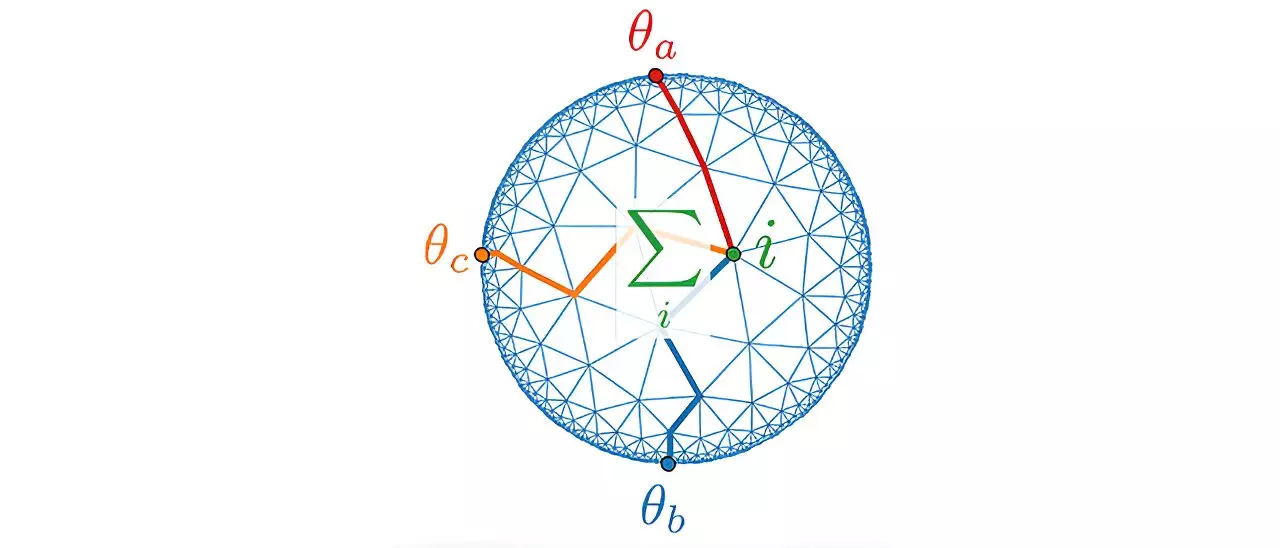Gravity has been a cornerstone of physics, often relegated to the shadows of its more glamorous counterparts like electromagnetism. Our grasp of gravity at large scales—spanning from planets to galaxies—has evolved remarkably, allowing humanity to chart the cosmos and engineer rockets that escape Earth’s formidable pull. However, the narrative shifts dramatically when we delve into the domain of quantum mechanics, where gravity’s intricacies remain largely veiled. Renowned physicist Professor Johanna Erdmenger, leading the charge in Theoretical Physics at the University of Würzburg, highlights the pressing need to reconcile classical gravitational theories with the peculiar behaviors witnessed at quantum scales.
In standard physics, we have robust equations that govern celestial movements and terrestrial phenomena. Yet, these classical laws falter at extreme conditions—such as the Big Bang or the mysterious region surrounding black holes—where densities and energies surpass the norms of our universe. Understanding these extremes requires a theoretical framework that encompasses quantum properties intertwined with gravitational forces. The fundamental challenge is clear: How do we create a unified theory that addresses gravity’s role at all scales? This inquiry stands as a monumental task for contemporary physicists, with Erdmenger and her team at the forefront.
One significant theoretical model working towards this goal is the Anti-de-Sitter/Conformal Field Theory (AdS/CFT) correspondence. This correspondence posits that the complex dynamics of gravity in a higher-dimensional, curved spacetime can be understood through simpler quantum theories operating at the boundary. Imagine a hyperbolic shape, akin to an inward-bulging funnel. The dynamics occurring at the edges of this funnel offer insights into the more intricate gravitational interactions unfolding within it. This relationship, while initially daunting, functions much like a holographic image—whereby two-dimensional data palpably represents a three-dimensional reality.
According to Erdmenger, understanding this holographic principle could illuminate otherwise perplexing gravitational scenarios. In essence, it serves as a bridge between abstract quantum theories and more tangible gravitational phenomena, revealing the hidden correlations between the outer and inner realms of spacetime.
Erdmenger’s team is not content with remaining in the realm of theoretical discourse; they are pioneering efforts to bring these theoretical predictions to the experimental forefront. By utilizing an innovative branched electrical circuit, they aim to recreate the effects of curved spacetime in a controlled laboratory setting. The intricacies of these electrical signals mimic the gravitational dynamics that would be observed at different spacetime points, providing a powerful tool to test the unconfirmed predictions of the AdS/CFT correspondence.
The findings, which have been documented in the journal Physical Review Letters, underscore the promise of this experimental model. The initial theoretical calculations suggest a congruence between the dynamics at the circuit’s edges and those within, validating a central tenet of the AdS/CFT framework. As the Würzburg team looks to transition from a theoretical backdrop to real-world applications, the implications of this research extend beyond theoretical physics.
The intersection of quantum gravity research and technological application cannot be overstated. In addition to advancing our understanding of gravitational theories, Erdmenger foresees remarkable technical innovations arising from these circuits. Using principles derived from quantum technology, these circuits promise to enhance electrical signal transmission by minimizing loss. This pivotal advancement could lead to innovations across fields including telecommunications, data processing, and beyond.
The experimental endeavor to validate the AdS/CFT correspondence presents a unique confluence of theoretical physics and practical engineering. By bridging the gap between esoteric theories and tangible applications, researchers like Erdmenger are on the cusp of transforming our understanding of gravity while simultaneously advancing the technical landscape. As we move forward, the insights gleaned from this research may illuminate the very framework of our universe, unlocking the profound mysteries that lie at the intersection of gravity and quantum phenomena.


Leave a Reply